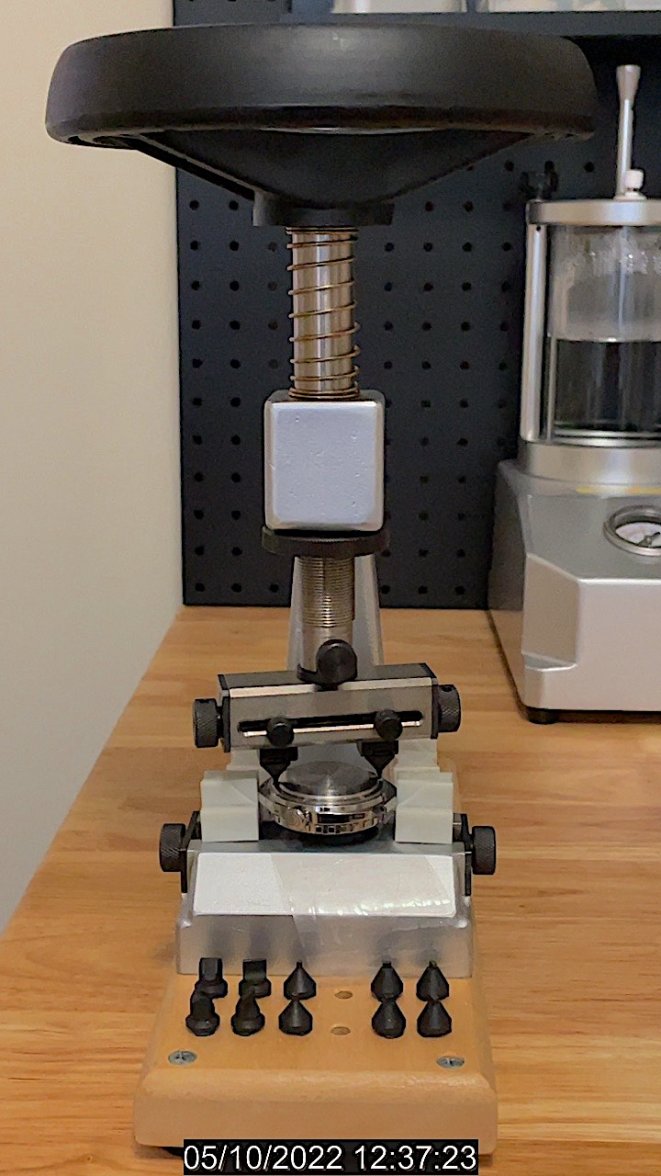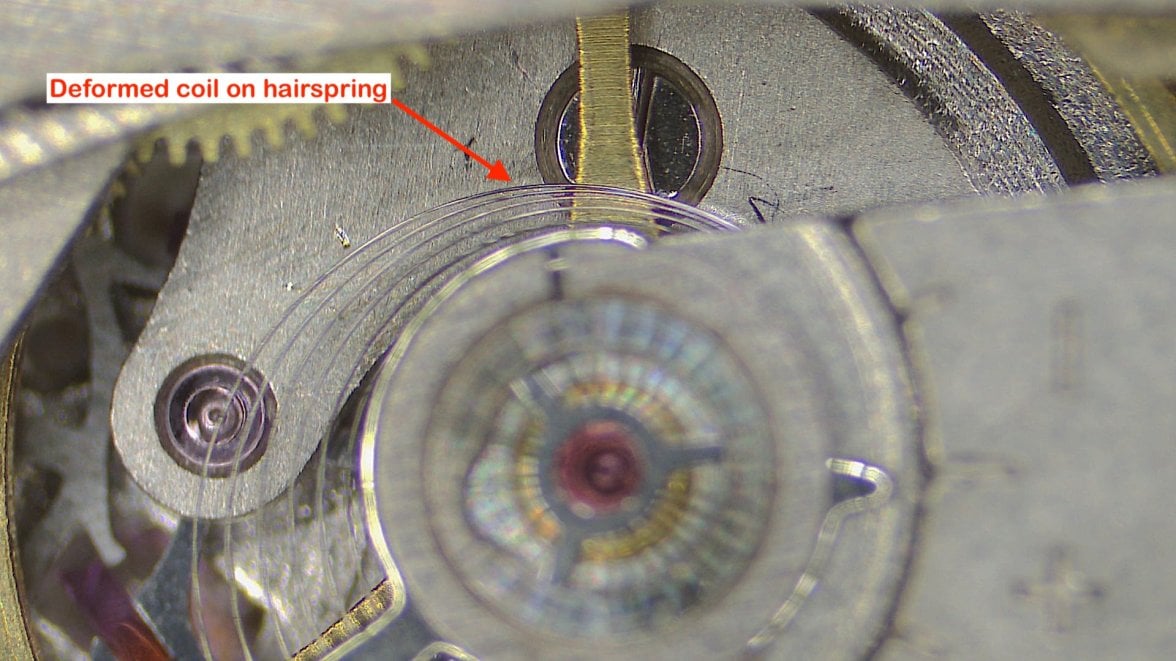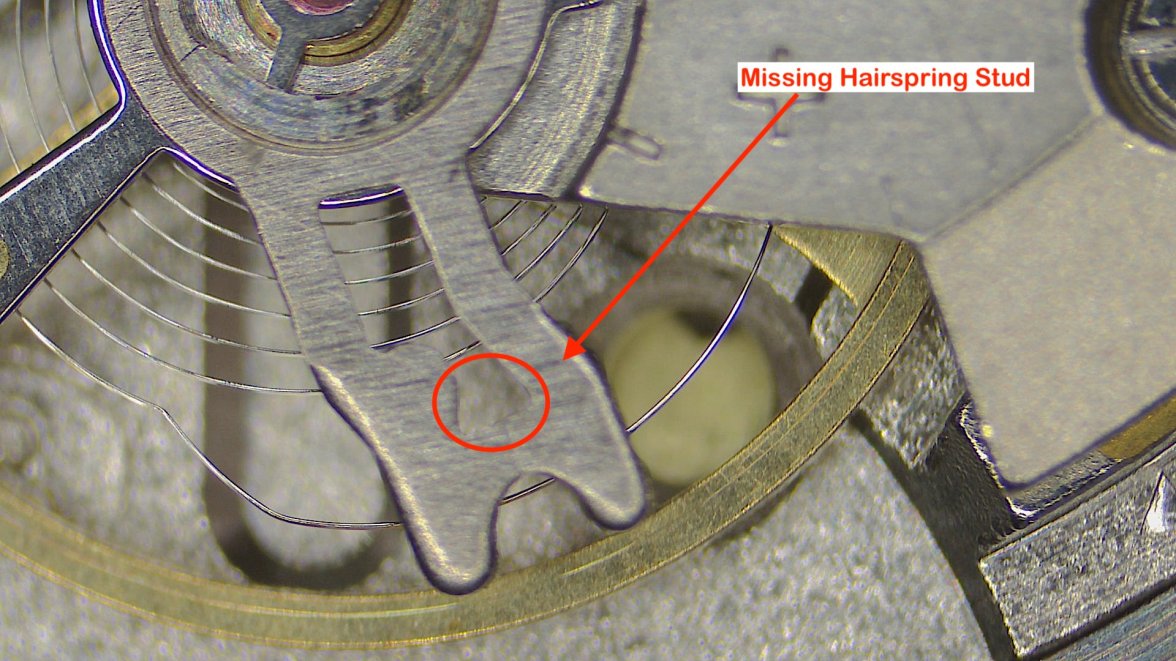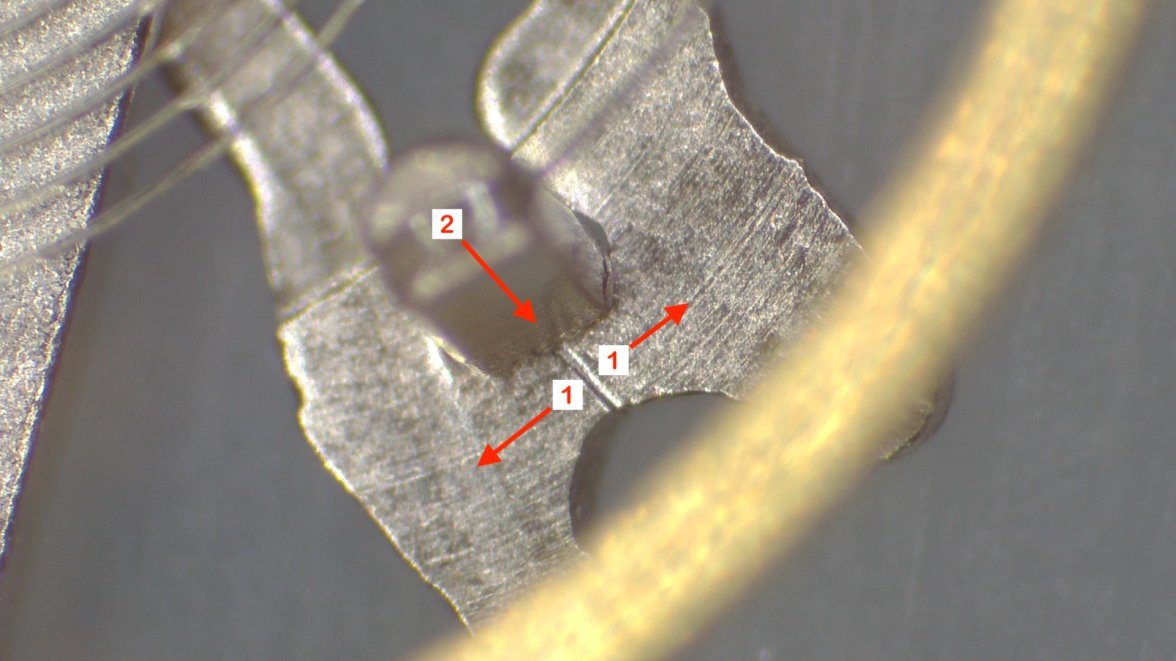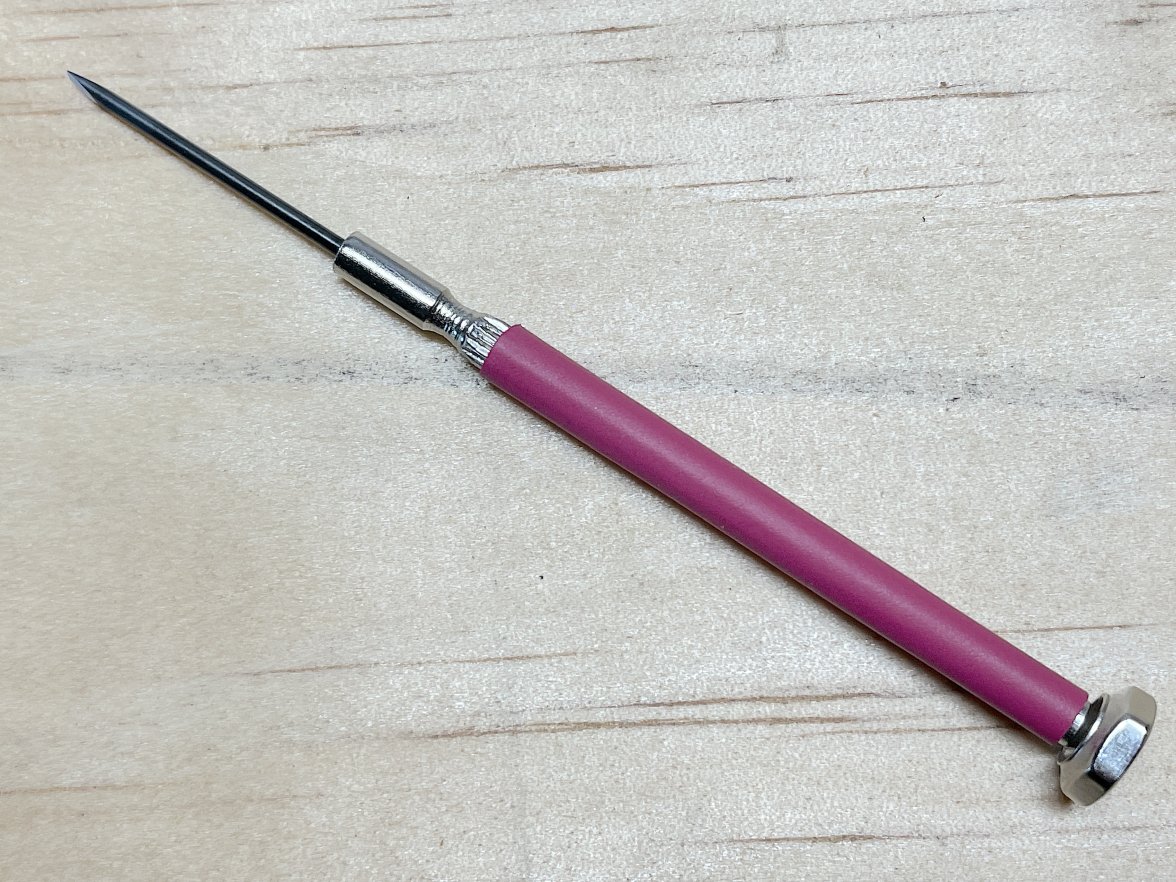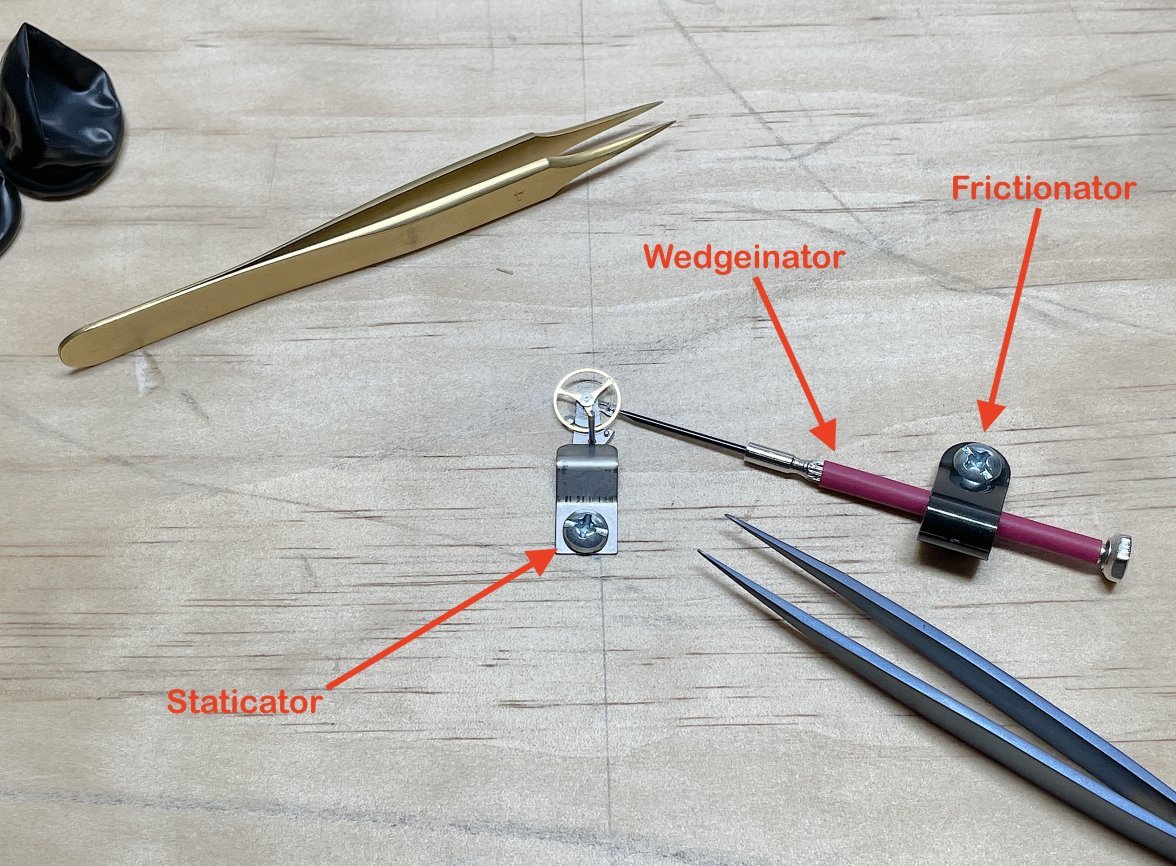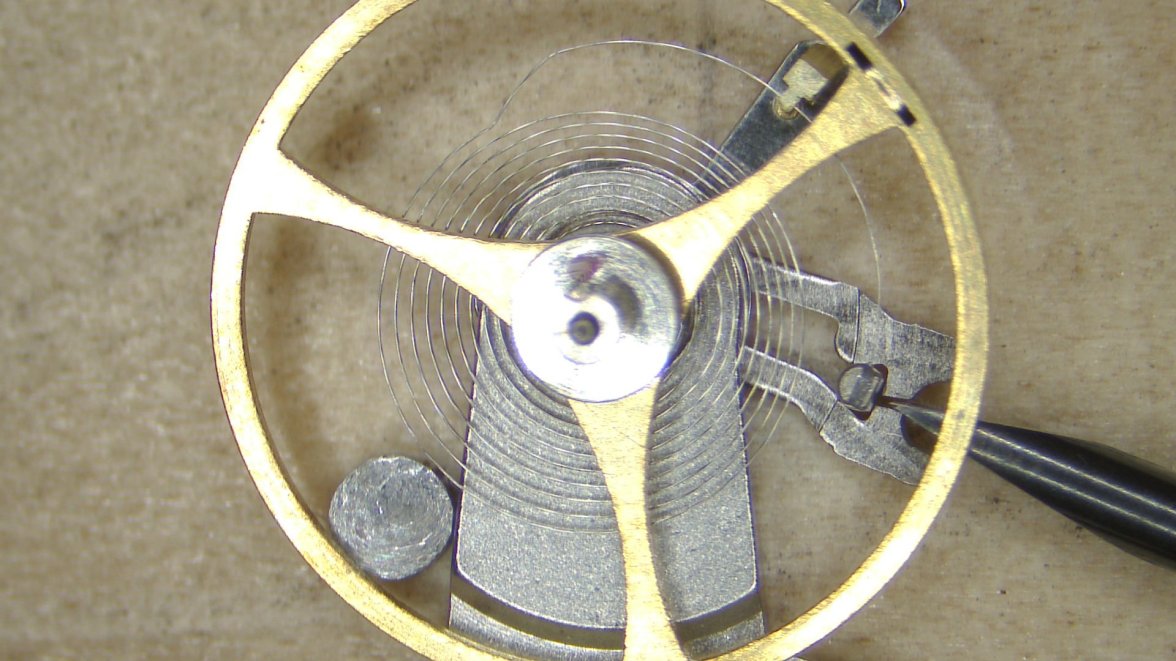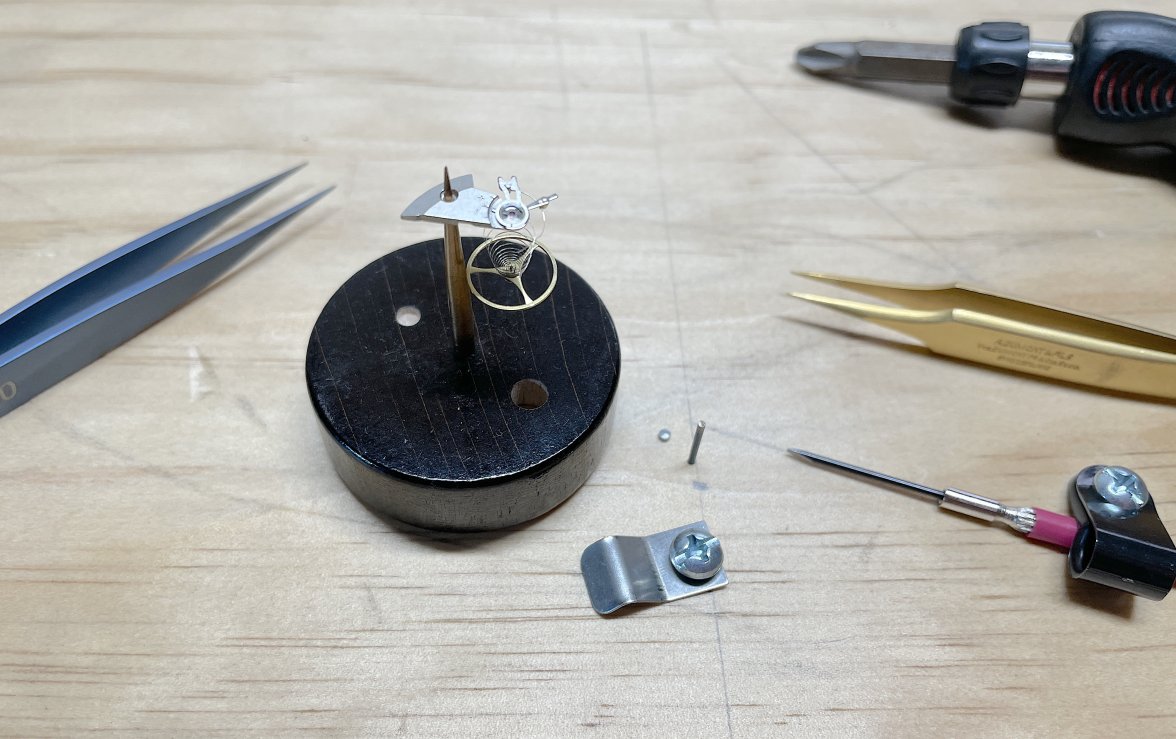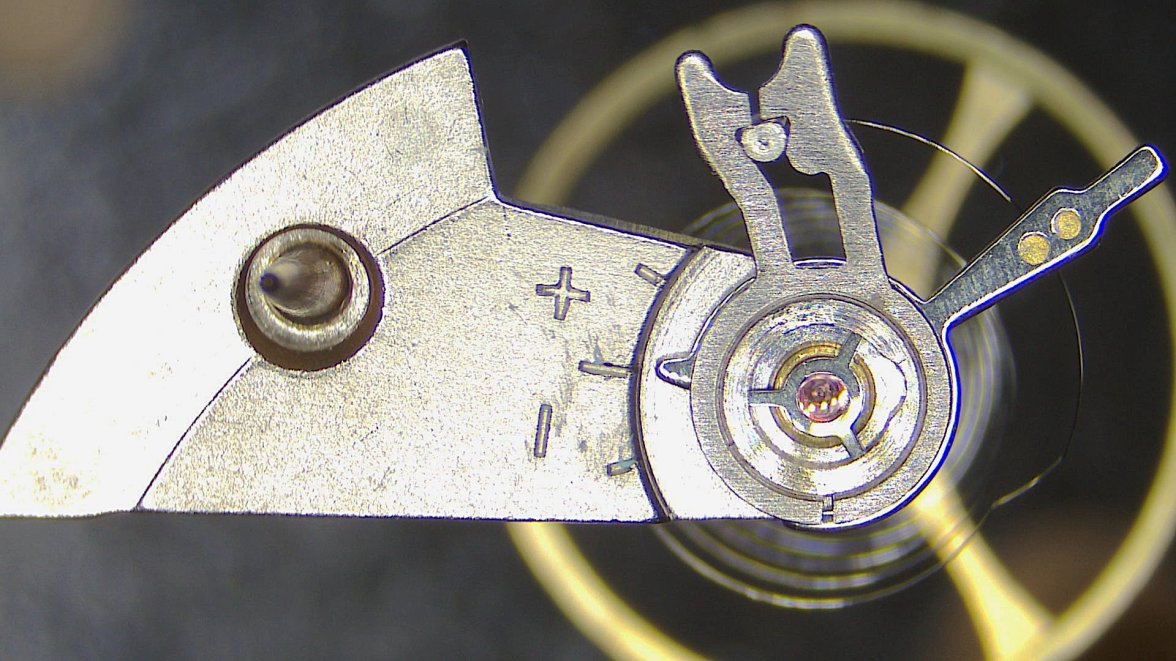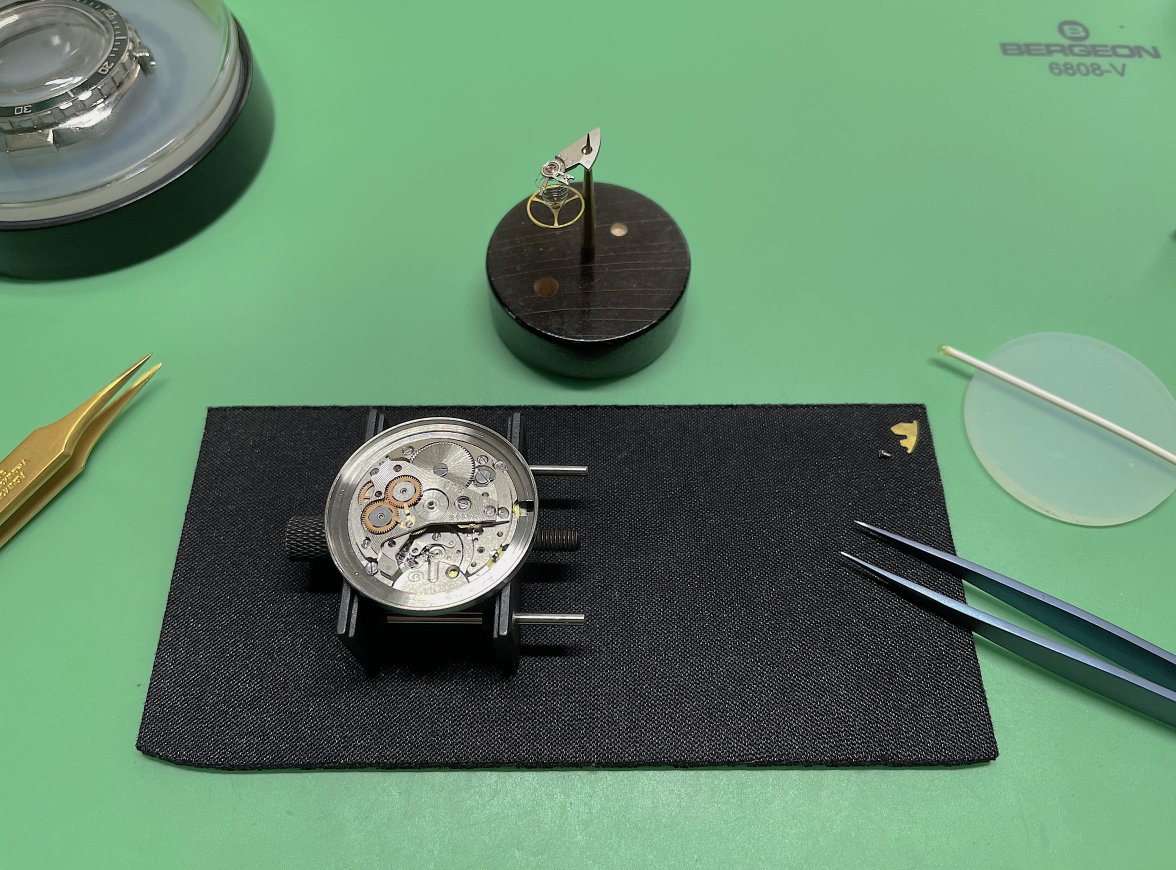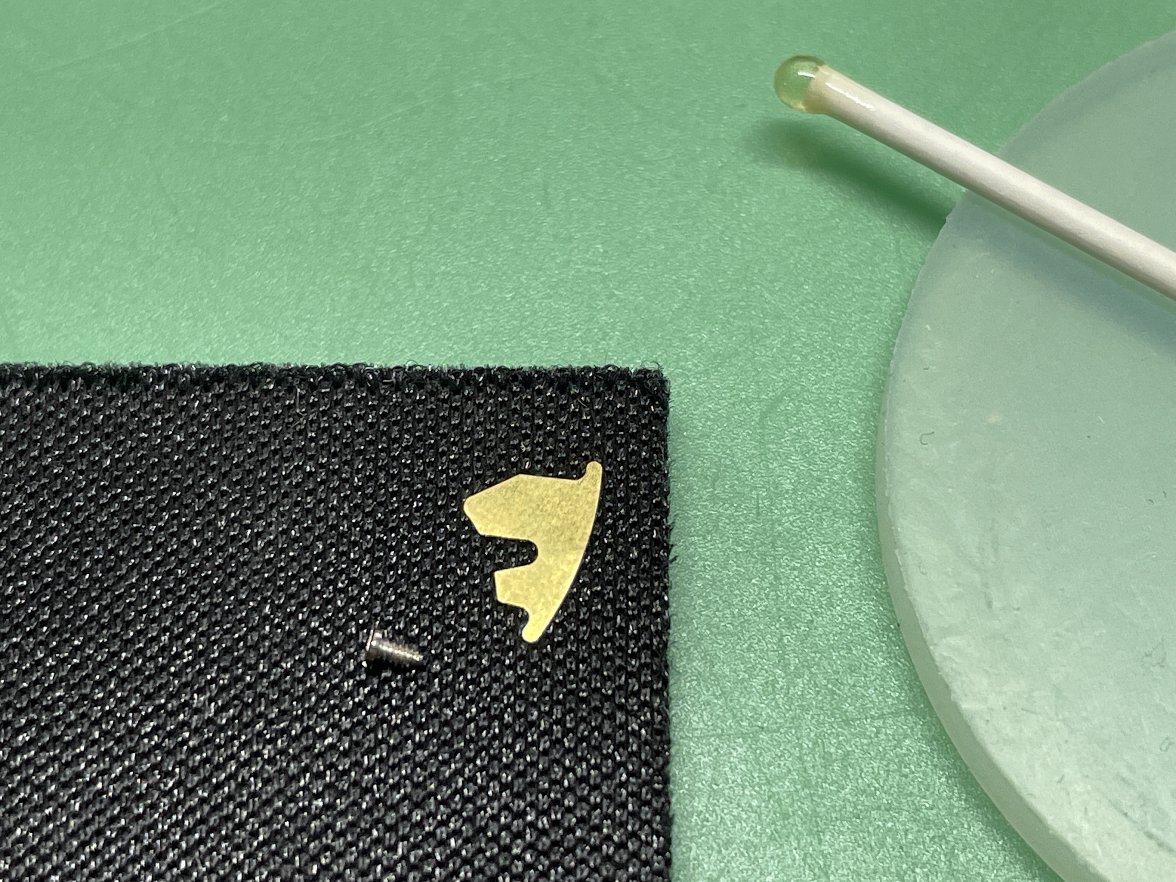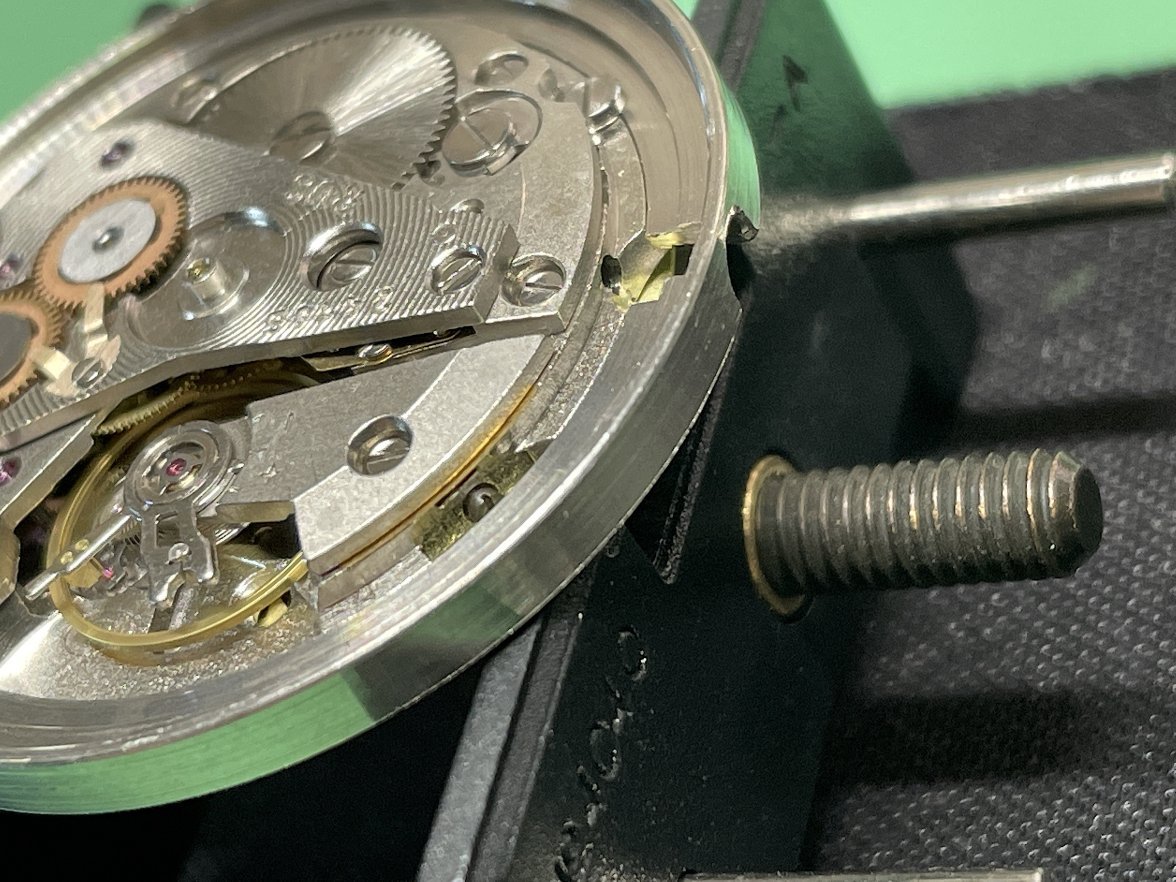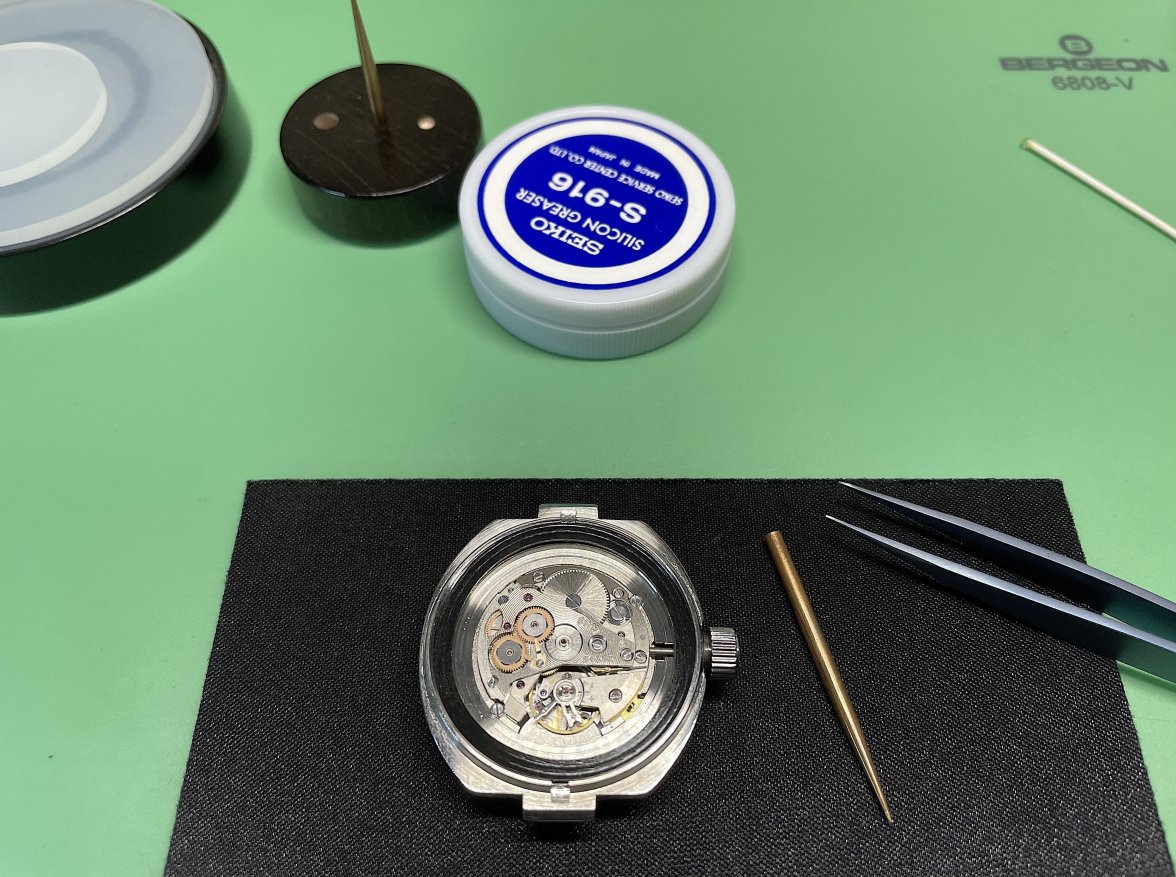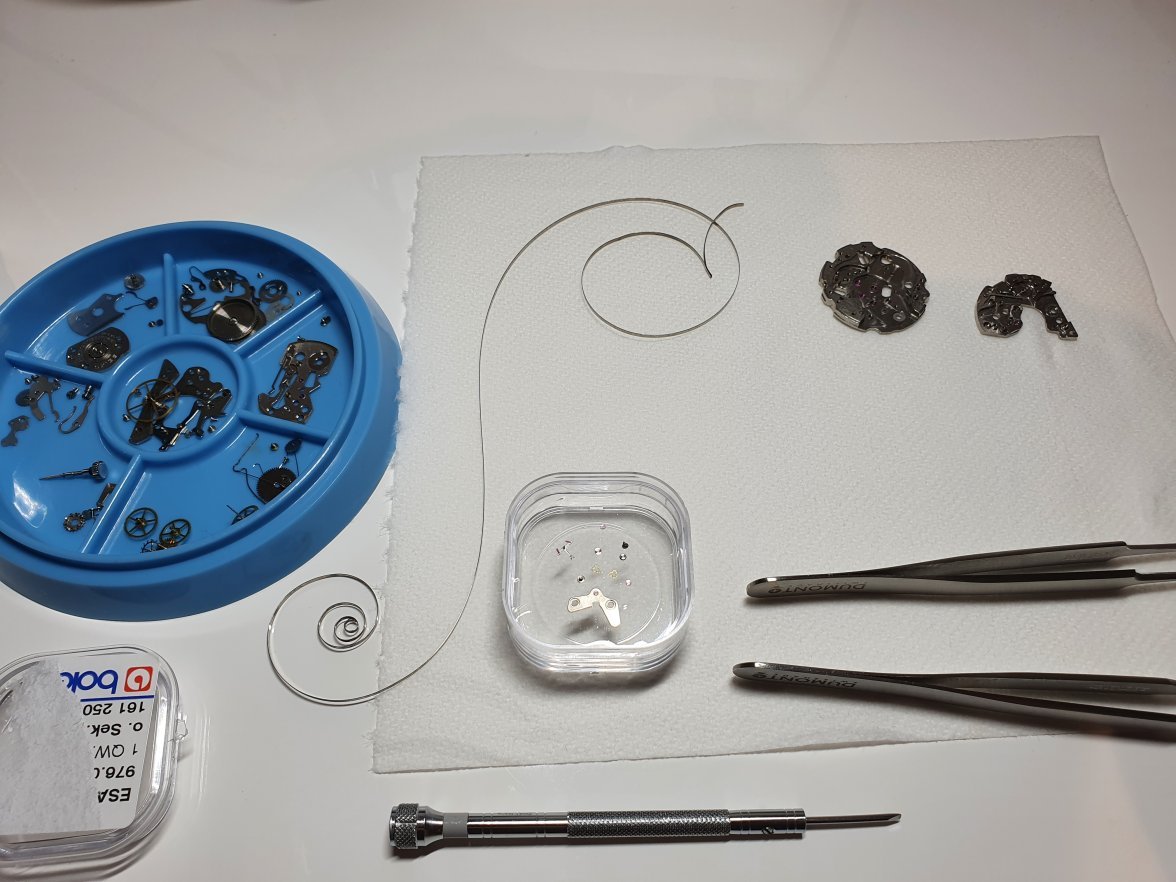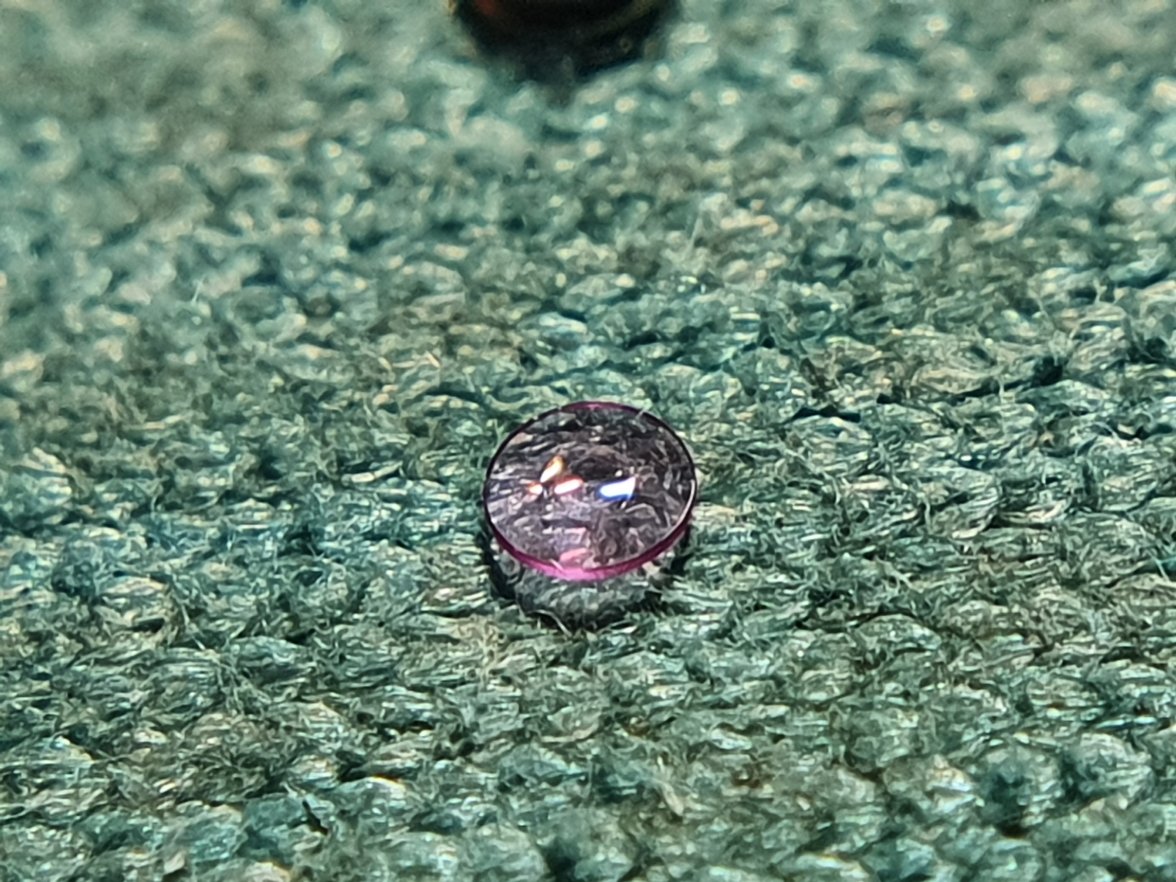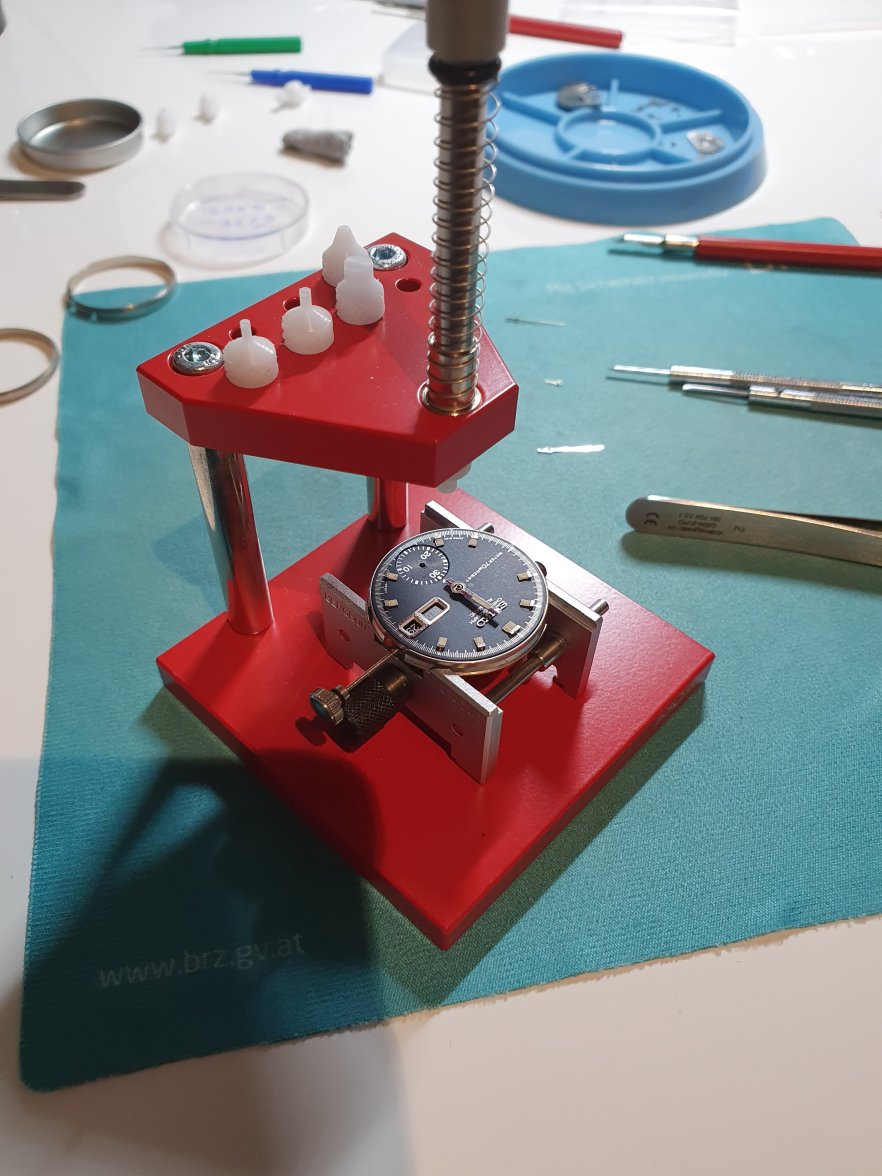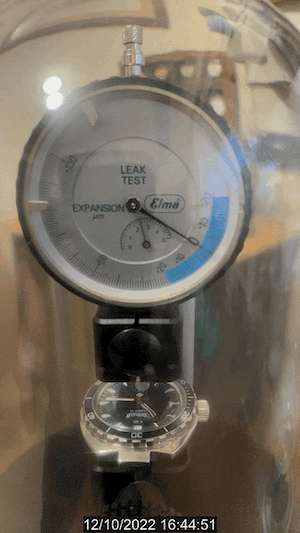JimInOz
··Melbourne AustraliaGot an urgent PM from @haychmack to see if I could help with his nice Vostok Neptune dive watch.
Timekeeping had become erratic and only seemed to work dial up.
Being a masochist I said OK, send it over.
The watch turned up a couple of days later, and while it was quite attractive (for a Russian watch), it was, technically speaking, a “Norwegian Blue”. It wasn’t pining for the fjords though, it was deceased, dead, not a breath of life from the seconds hand.
After taking an “as received” photo, I removed the bracelet, took more photos and then went about opening the case.
With the pressed steel caseback removed, I was able to get a good look at the movement. A standard Vostok caliber 2416b, so nothing rare or unusual.
Looking closer I saw that the hairspring coil was seriously out of whack. Instead of nice evenly spaced coils, the spring was compressed to one side.
Looking further, it became obvious as to what the problem was. The stud that holds the end of the hairspring had departed the stud carrier.
With the balance assembly removed from the movement, it was plain to see.
It seemed to be a simple fix, just re-attach the sud to the carrier. However! Those cunning Russkies had a special way of holding the stud in the carrier. Not content with the tried and true method of holding the stud in the carrier by a simple screw used in millions of watches, or even the ETACHRON style system used by many others, this stud is held in a split carrier, so to insert the stud, it’s necessary to (1) open the “jaws” of the carrier and (2) insert the stud into the carrier.
Easy peasy as Jamie says, you only need one hand to hold the balance cock steady, one hand to open the jaws, and one hand to manipulate the stud into the carrier.
Only having the standard issue of two hands, I had to start thinking.
🍿
Timekeeping had become erratic and only seemed to work dial up.
Being a masochist I said OK, send it over.
The watch turned up a couple of days later, and while it was quite attractive (for a Russian watch), it was, technically speaking, a “Norwegian Blue”. It wasn’t pining for the fjords though, it was deceased, dead, not a breath of life from the seconds hand.
After taking an “as received” photo, I removed the bracelet, took more photos and then went about opening the case.
With the pressed steel caseback removed, I was able to get a good look at the movement. A standard Vostok caliber 2416b, so nothing rare or unusual.
Looking closer I saw that the hairspring coil was seriously out of whack. Instead of nice evenly spaced coils, the spring was compressed to one side.
Looking further, it became obvious as to what the problem was. The stud that holds the end of the hairspring had departed the stud carrier.
With the balance assembly removed from the movement, it was plain to see.
It seemed to be a simple fix, just re-attach the sud to the carrier. However! Those cunning Russkies had a special way of holding the stud in the carrier. Not content with the tried and true method of holding the stud in the carrier by a simple screw used in millions of watches, or even the ETACHRON style system used by many others, this stud is held in a split carrier, so to insert the stud, it’s necessary to (1) open the “jaws” of the carrier and (2) insert the stud into the carrier.
Easy peasy as Jamie says, you only need one hand to hold the balance cock steady, one hand to open the jaws, and one hand to manipulate the stud into the carrier.
Only having the standard issue of two hands, I had to start thinking.
🍿

